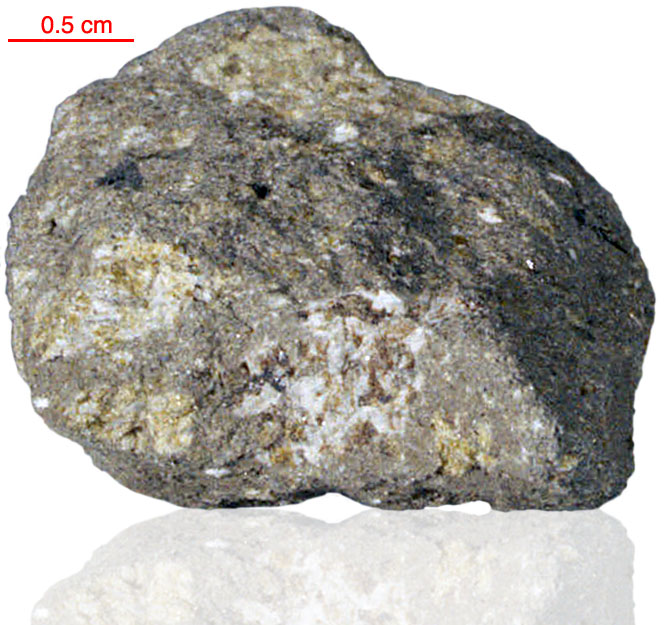
Fact sheet
15145 is a breccia which appears to be almost monomict and formed of coarse mare basalt clasts. It is light grey, subangular, and tough. It was collected as part of a rake sample. 15145 consists predominantly of clasts of coarse mare basalts (see rotation 1) in a ground up, mainly mare-derived breccia. Very large pyroxenes (about 3 mm across) are commonly twinned, without obvious zoning. A few fine-grained and recrystallized mare basalt clasts are also present (see rotation 2), along with a few glass spherules and chondrules. Our thin section also contains a significant norite clast near rotation 2.
The sample weighed 15.1 grams before analysis and has not been dated.
Further details of this and other Apollo samples are here: http://curator.jsc.nasa.gov/lunar/
The Apollo 15 landing site was in the Apennine Highlands, and close to Hadley Rille — a long, narrow winding valley. Approximately 76 kg of lunar material, including soil, rock, core-tube and deep-core samples, were returned to Earth.
This mission was the first flight of the Lunar Roving Vehicle which allowed the astronauts to venture further from the Lunar Module than in previous missions. During three periods of extravehicular activity, or EVA, on July 31st, and August 1st and 2nd, Scott and Irwin completed a record 18 hours, 37 minutes of exploration, travelling 17.5 miles, in the first car that humans had ever driven on the Moon.
Apollo 15 was launched on 26 July 1971.






